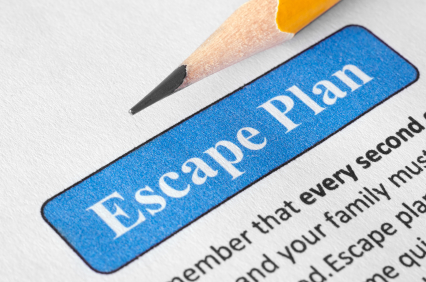 Given the fast acting nature of emergencies, you may only have matter of minutes to gather the necessary items for survival. Fires and floods cause evacuations most frequently across the U.S. and almost every year, people along coastlines evacuate as hurricanes approach. In addition, hundreds of times a year, transportation and industrial accidents release harmful substances, forcing many people to leave their homes. As prepared as we all want to be during these situations, not having an effective plan will hinder you and inevitably cause more chaos.
Given the fast acting nature of emergencies, you may only have matter of minutes to gather the necessary items for survival. Fires and floods cause evacuations most frequently across the U.S. and almost every year, people along coastlines evacuate as hurricanes approach. In addition, hundreds of times a year, transportation and industrial accidents release harmful substances, forcing many people to leave their homes. As prepared as we all want to be during these situations, not having an effective plan will hinder you and inevitably cause more chaos.
The following scenarios are all examples of why you may have to flee you home.
- House fires
- Wildfires/Forest fires
- Flooding
- Nuclear or chemical spills
- Natural disasters
- Societal collapse (riots, looting, etc.)
The amount of time you have to leave will depend on the hazard. However, many disasters allow no time for people to gather even the most basic necessities, which is why planning ahead is essential.
Preparing Your Home For Emergencies
There are ways to prepare your home for emergencies. Many of us have smoke detectors in the home, but are they installed on every level of the home and placed outside sleeping areas? Remember to test your smoke detectors once a month and replace the batteries twice a year. Further, if you live in a two story home, consider purchasing escape ladders for each bedroom. If the stairs are blocked with debris or smoke, the window may be the only means of escape. Have all age appropriate family members practice and know how to use them. These are best stored near the window it plans to be used on. Another way to prepare your home for emergencies is to make certain your house number is visible from the street in both the day and night. This ensures that the Fire Department can easily find your home and respond in a timely fashion. If your windows are equipped with security bars, make certain they have quick release devices installed and make sure everyone in the family knows how to use them.
Creating a Household Escape Plan
- Have a 72 hour kit prepared and stored near an exit.
- Draw your home floor plan, then draw your evacuation routes and a meeting place. Have at least two escape routes from each room.
- Mark the locations of any escape ladders, or other special equipment.
- Mark the locations of fire extinguishers, smoke detectors, first aid kits, disaster 72 hour kit.
- Mark the locations of the shut offs for gas, water, and electricity.
- For those with medical conditions or disabilities, mark their location as well as the location of any special equipment they will immediately need.
- Have a planned meet up spot outside the affected areas for others who may be joining you.
- If time allows, secure your home by closing and locking doors and windows.
- Unplug electrical equipment such as radios, televisions and small appliances. Leave freezers and refrigerators plugged in unless there is a risk of flooding. If there is damage to your home and you are instructed to do so, shut off water, gas and electricity before leaving.
- Leave a note telling others when you left and where you are going.
- Wear sturdy shoes and clothing that provides some protection such as long pants, long-sleeved shirts and a cap.
- Check with neighbors who may need a ride.
Family Emergency Evacuation Plan
- Have your evacuation vehicle maintained regularly. keep a full tank of gas in it if an evacuation seems likely. Keep a half tank of gas in it at all times in case of an unexpected need to evacuate. Gas stations may be closed during emergencies and unable to pump gas during power outages. Plan to take one car per family to reduce congestion and delay.
- Have maps ready for Plan A and Plan B routes for evacuating the city in North, South, East and West directions.
- Plan places where your family will meet, both within and outside of your immediate neighborhood. Use the Family Emergency Plan to decide these locations before a disaster.
- Become familiar with alternate routes and other means of transportation out of your area. Choose several destinations in different directions so you have options in an emergency.
- Leave early enough to avoid being trapped by severe weather.
- Follow recommended evacuation routes. Do not take shortcuts; they may be blocked.
- Be alert for road hazards such as washed-out roads or bridges and downed power lines. Do not drive into flooded areas.
- If you do not have a car, plan how you will leave if you have to. Make arrangements with family, friends or your local government.
- Take your emergency supply kit unless you have reason to believe it has been contaminated.
- Listen to a battery-powered radio and follow local evacuation instructions.
- Take your pets with you, but understand that only service animals may be permitted in public shelters. Plan how you will care for your pets in an emergency.
- If time allows: Call or email the out-of-state contact in your family communications plan. Tell them where you are going.
To conclude, knowing what types of emergency escape scenarios to plan for, and being prepared for each one will help your family leave more quickly to avoid traffic congestion and destruction caused by disasters.
